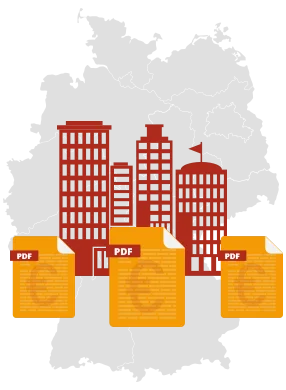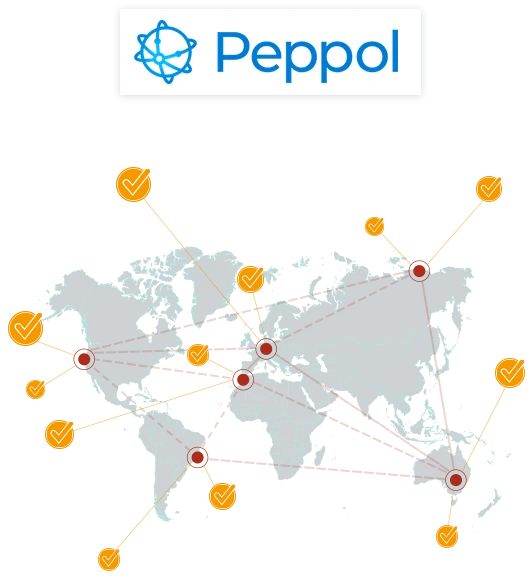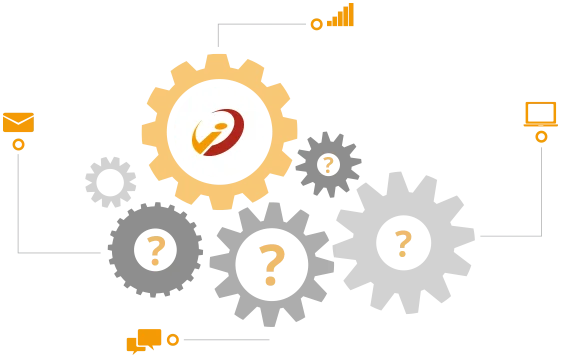What is e-Invoicing?
Learn everything about e-invoices
The digitalization and modernization of traditional business processes is one of the most important topics of our time. With the help of e-invoicing (electronic invoices), an important part in the value chain can be optimized and even automated. From a legal perspective, electronic invoices are treated in exactly the same way as "classic" invoices.
Many companies are dealing with e-invoicing issues. Electronic invoicing processes are not only a necessary standard, but are also driven forward by law (European Directive 2014/55/EU). By introducing electronic invoicing processes, many important resources such as material, time and budget can be saved. In addition, electronic solutions are significantly less prone to errors compared to humans.
So how do digital invoice processes work? What challenges, issues, advantages and disadvantages do you face when implementing an e-invoicing solution? Find out everything you need to know about e-invoicing in our article.
What is an electronic invoice?
An electronic invoice is an electronic document, unlike a classic invoice, which is usually issued in paper form. The e-invoice is also sent and received in this digital format. However, the term e-invoicing is not rigidly defined. It is understood to mean both: the transmission of pictorial representations by simple means of transport (e.g. PDF by e-mail), but also the transport of more complex formats by elaborate means (e.g. EDIFACT via AS2). In any case, the transmitted information can be processed automatically on the recipient side. Depending on the type of document, DMS/OCR or EDI solutions are used to ensure that such invoicing processes can be carried out smoothly.
From a technical point of view, there are several formats (invoice formats) for electronic invoices. Some of them (e.g. EDIFACT or XML) transmit all the necessary information of an invoice in the form of structured data. Others communicate the content in the form of an image file (e.g. .jpg or .pdf). The information in the latter alternative is thus sent in an unstructured data format. Some formats are called "hybrids", because they consist of both structured and unstructured data (e.g. ZUGFeRD). With the help of EDI software, invoice formats can be converted, sent, and processed by the recipient.
The communication channels of electronic invoices offer a direct exchange between sender and receiver. In addition, systems used as an interface for such communication channels can optimize and automate individual processes. There are several options for transmitting and receiving electronic invoices (e.g. e-mail or web download). With an EDI connection, suitable solutions can be created for such requirements, which improve such exchange processes. Typical EDI communication protocols are: AS2, OFTP2, email, FTP, http or SOAP.
How does e-invoicing work?
Issuing and receiving electronic invoices (e-invoicing) is an important part of the overarching term "EDI" (=Electronic Data Interchange). The term EDI covers the entire (internal and external) electronic data exchange of a company. With the help of EDI software, different invoice formats can be exchanged automatically between business partners. Despite the simplification and improvement of classic invoicing processes, many new terms and hurdles are added in the electronic variant.
How are electronic invoices exchanged?
The lifecycle of an electronic invoice starts with its sender. In this example, let's take a company that wants to issue an electronic invoice to another company.
Conversion: Before the recipient receives the invoice, the format and communication channel are often defined in advance. In many cases, the business partner specifies a standard that must be adhered to. Now the sender must ensure that the data for the invoice is converted from the sender's own system (e.g. databases or ERP) into a predefined format.
Communication: The converted invoice can now be sent to the recipient via a specified communication channel. The received electronic invoice can then be accepted by the respective company and transferred to its own system (e.g. ERP).
Automation: With the help of an EDI solution, both conversion and communication can be automated. Through so-called EDI mapping, data from different sources and formats can be combined into a uniform file and converted appropriately. At the same time, transmission and reception from another system can be made more efficient by an an EDI communication solution. Through an EDI connection, channels can be used for communication that would not be possible without this solution.

What do you need to consider when implementing e-invoicing?
The most important questions:- The most important questions:
- Which data sources need to be addressed to create the invoice?
- Which communication channels/protocols are used for transmission and receipt?
- How can the individual steps be automated
Differences between e-Invoicing
and classical invoice exchange
E-invoicing offers many advantages over traditional invoice processes. As with many other solutions being driven by digitization, e-invoicing enables a wide range of new options. Traditional invoicing processes require a lot of costly resources such as personnel, time and money. E-invoicing, on the other hand, creates an alternative solution that makes the entire workflow faster, cheaper and more secure. An e-invoicing solution can be linked to various systems (ERP or in-house software).
Workflow for outgoing invoice (Classic vs. e-Invoicing):
Creation of the invoice
Printing of the invoice
Enveloping and franking the invoice
Sending the invoice
An outgoing invoice after the conversion to an electronic solution:
Creation of the invoice (automated)
Processing of the invoice (e.g. ERP) (automated)
Conversion to an agreed format (automated)
Dispatch through an e-invoicing solution (automated)
Workflow invoice receipt (classic vs. e-invoicing):
Receipt of the invoice
Opening, scanning and archiving of the invoice
Capture, processing and verification of the invoice
Confirmation (manual approval) and payment of the invoice
An invoice receipt after the conversion to an electronic solution:
Receipt of the invoice
(Automatic) account assignment of the invoice
(automatic) recording and release of the invoice
Payment of the invoice (can also be automated)
All the benefits of e-invoicing:
Costs:
with the help of e-invoicing, costs for paper, processing, archiving and postage can be saved (up to 80% of the costs for individual invoice processes).
Resources & Efficiency:
Many important resources such as personnel, material and time can be saved with an electronic solution. By automating of individual work steps, invoicing processes can be implemented more quickly and easily.
Security & error-proneness:
The security of electronic invoicing processes can be ensured by adhering to and using certain standards. For example, encryption of invoice data can enable secure transmission. In addition, automated electronic processes are much less prone to errors than human processes.
Flexibility:
An EDI connection enables billing processes to run smoothly. This means: The most diverse requirements for file formats, communication channels and processing times can be easily met with a suitable EDI solution.





